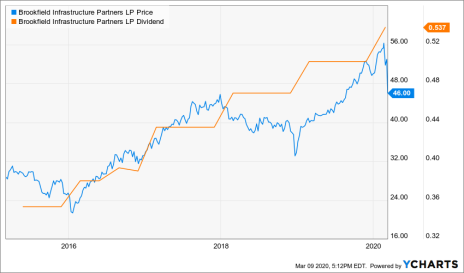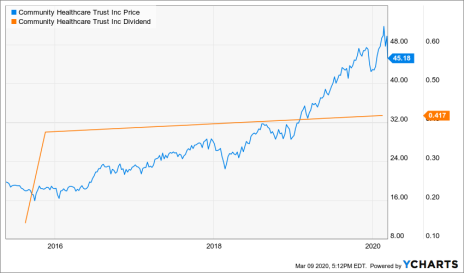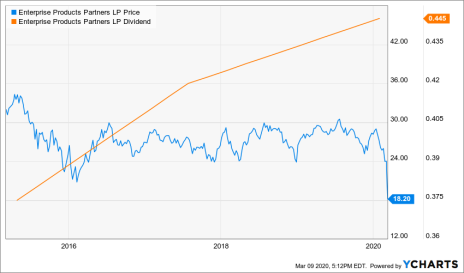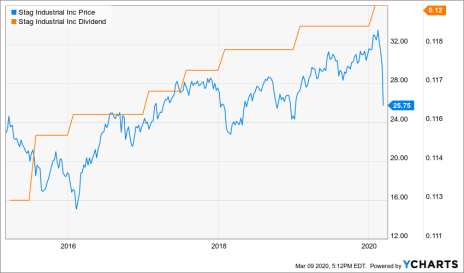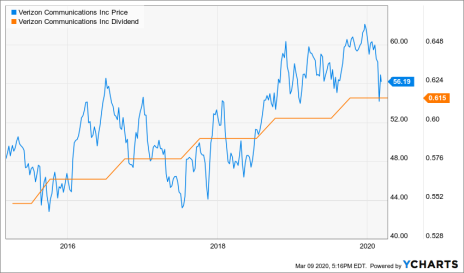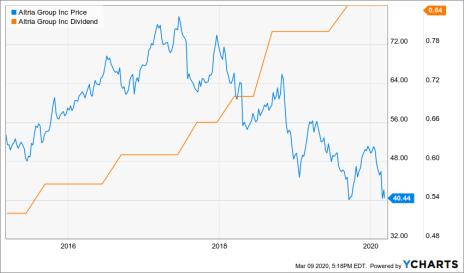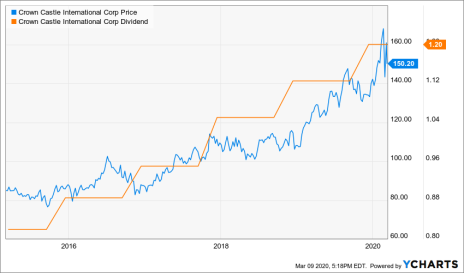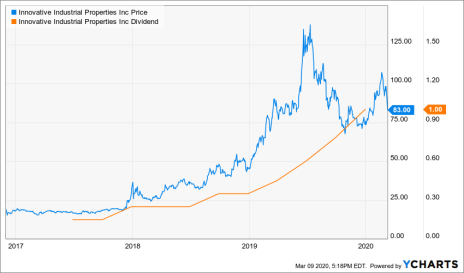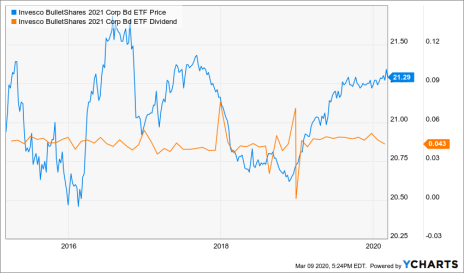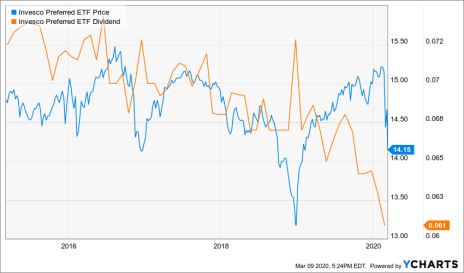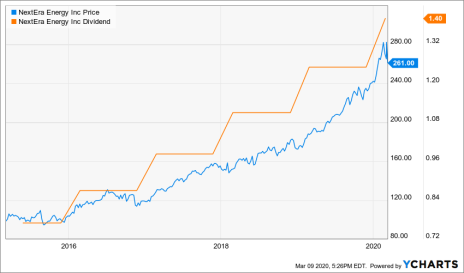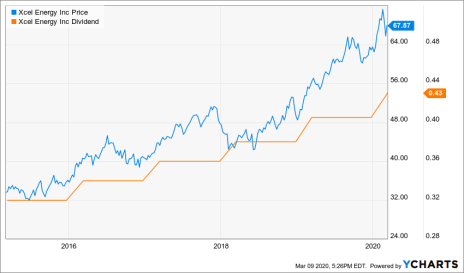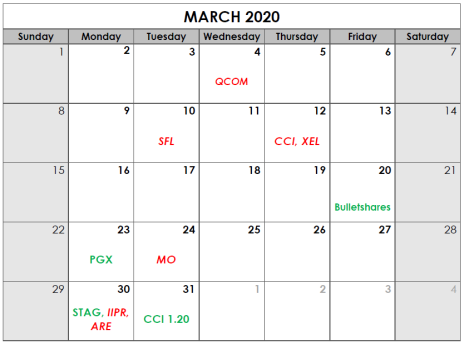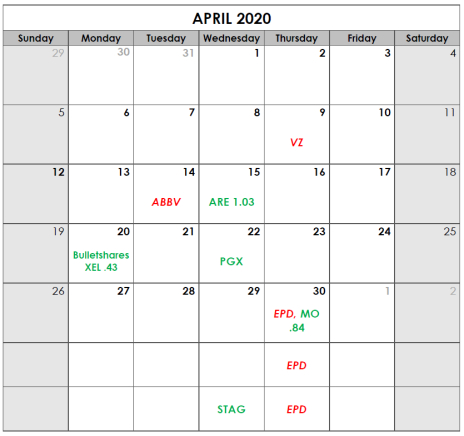The coronavirus is sending the market into a tailspin. It took a thriving bull market from all-time highs to the cusp of a bear market in a matter of weeks.
It is likely that this market will not significantly recover until there is more clarity on the extent of the economic disruptions it is causing and how long they will last. That seems unlikely for several weeks at least. In the meantime, the market is vulnerable to constant headline risks.
It is likely that the market has not found a bottom.
That said, this too shall pass. The coronavirus is a black swan event that is singularly responsible for the market crash. When the panic and emergency subsides, and it will, the market will likely recover and make up for lost time.
In this issue I discuss the ramifications and measures to protect your investments. As well, I identify rare securities that are timely opportunities while the market is down. These stocks have limited downside if the market continues to fall and huge upside leverage when it recovers.
Cabot Dividend Investor 320
[premium_html_toc post_id="200145"]
At the Mercy of the Virus
I’ve never seen anything like it. A virus has taken a powerful bull market from all-time highs to the cusp of a bear market (down 20% from the high) in a matter of weeks.
There wasn’t much market reaction at all to the SARS virus or the far more deadly Ebola virus a few years ago. The flu kills tens of thousands of people in this country every year and the vmarket could care less. But the coronavirus has sent the global economy and the market into a tailspin.
Is it really that bad? Nobody knows. And that’s the problem. Admittedly, I’m no expert on contagious viruses. All I know is what I research. But when I research 10 different sources, I get 15 different opinions. Here’s what the most commonly held facts seem to indicate to me.
The virus is no deadlier than the common flu. But a seasonal flu typically has a limited range of people it will likely infect. It is not yet understood how contagious the coronavirus can be. It could potentially be far more widespread than the flu. And it may not go away when the weather gets warmer.
That uncertainty is what causes panic. China, where the virus originated, has seen it spread much more than any place else. In response, the economy all but shut down as whole cities were closed and large swaths of the population were quarantined. The virus has spread to every continent. And now it’s here in the U.S.
Other countries including Japan, South Korea and Italy are taking similar measures as China, with similar economic disruptions. School and business closings as well as event cancellations on a wide scale seem likely, if not inevitable, in the U.S. There will most likely be a severe economic impact, at least in the near term. It could even push the economy into recession depending on the severity of the economic impact and how long it lasts.
Is all of this an overreaction? It very well might be. But it doesn’t really matter. As far as the economy and the markets are concerned, the reaction is the disruptive force that closes businesses and keeps people at home. It is reasonable to expect governments and businesses to err on the side of caution to avoid potential nasty repercussions from having not done enough if things get bad.
The market hates uncertainty. And this virus event has it in droves. Will it be better or worse a month from now? Nobody knows. How severe and how long will the economic disruption be? Nobody knows. You see the problem.
Take heart, there is a silver lining to all this. The damage to the economy and the market is being done by one black swan event, the coronavirus. It isn’t because the economy is just running out of gas or crumbling under the excesses of the long expansion. It’s just the virus. When the disruption ends, we should be good to go. Indeed, the economy and the market may rebound and make up for lost time later in the year.
When the smoke clears, money will still have no place else to go but stocks to fetch a decent return. And the market won’t be overpriced anymore. It could also be free of the stigma of being the oldest bull market in history.
Unfortunately, I don’t see how the market significantly recovers from this downturn until there is a lot more clarity as to the severity and length of the economic disruption. And such clarity seems unlikely in the next couple of weeks at least. In the meantime, there will be constant headline risk. And this virus is a negative headline factory.
At this point, there is a very good chance, if not a likelihood, that we have not yet seen the bottom of this market selloff.
What to Do Now
Although I believe it is likely that the previously “BUY”-rated positions in the portfolio will be higher, and perhaps significantly so, by the end of the year, I am reducing several BUY-rated positions to a “HOLD”. They will likely return to a BUY rating when there is less downside risk to the market.
Given the precarious situation of the current market there are only a few select stock positions that warrant a BUY rating at this point. One is EPD, which, after the worst single day selloff in the energy sector since 1991, is likely to bounce somewhat higher over the next week. The other two I will explain in the “Featured Buy” section below.
There are also no rating changes to “SELL” this week. Although the market may well have further downside, after a week in which the market crashed over 10% and a day on which it crashed almost 8%, there is a strong chance the market rebounds somewhat over the course of the week. As well, we could have seen the market bottom or close to it, even though I think that may be unlikely. But I still believe all the positions will be higher by the end of the year.
Many of the portfolio positions are defensive companies that typically outperform in down markets and are poised to do well when the market rebounds, as investors will have an appetite for safer stocks after the recent tumult. These stocks include BIP, CHCT, MO, NEE, XEL, CCI and ARE; all of them are currently rated HOLD. They shouldn’t have too much downside and will likely rebound quickly.
It’s time to be cautious. But it’s not the time to sell in panic after a horrible week.
Featured BUys
After a better than 18% selloff in the market, a number of stocks have compelling valuations and catalysts to move higher over the longer term. There are several such stocks in this portfolio as well. But with a strong chance that the market falls lower in the weeks ahead, I’m being extremely selective with buying at this point.
But two particular stocks in the portfolio fit the current situation. They both have limited downside if the market turns south from here, and they have strong upside potential when the market rebounds. Given those strong qualities and the fact that I believe these stock prices will be higher by the end of the year, they are worth buying at this point.
Verizon Communications (VZ)
Verizon in the largest U.S. wireless carrier. Of the four major U.S. telecom carriers (Verizon, AT&T, Sprint and T-Mobile), Verizon has by far the most wireless revenues with the largest network and coverage.
It also has other sources of revenue in addition to wireless services including fixed-line services including cable and internet, enterprise services, security systems and some online media. But, make no mistake about it, wireless is the main part of the business, accounting for 70% of revenues and 85% of adjusted earnings.
It is the closest thing to a pure wireless company. The other providers are distracted and tied up with mergers (the pending Sprint/T-Mobile merger and AT&T’s absorption of Time Warner) while Verizon is honed in on wireless.
The stock was just featured in last month’s issue, so I will more briefly summarize here. It’s a buy because it’s a great way to play both offense and defense.
Once it was a high growth stock when wireless first permeated the market in the 1990s. But big telecommunications companies in the U.S. have become more like utilities. They pay a high and secure dividend but offer little growth. While VZ underperformed the S&P 500 in this bull market, it still delivered better returns than any other asset class, and with much less volatility than the overall market.
A defensive stock like this is a great play in the current environment. It has barely moved lower through all the down market tumult of the past month and has been the best-performing stock in the portfolio through the selloff. But now it also has a growth catalyst in 5G.
5G is much more than a next generation incremental advancement in cellular wireless technology. It represents a tipping point in technological evolution that will thrust the world into digital age, enabling new technologies in self-driving cars, artificial intelligence, virtual reality, smart cities and much more. Only a few things are connected to the internet now, but in a few years everything will be connected.
Verizon is the number one provider in the U.S. in connecting cellular to the internet. As more and more things get connected, Verizon will be there to charge a fee. Smartphones will generate higher user fees and they will offer more services.
5G is just rolling out now and Verizon is most often first to the party having rolled it out in 30 cities already. This solid defensive stock is about to get a shot of growth. It’s great in this down market and should excel when the market recovers as well.
AbbVie Inc. (ABBV)
U.S.-based biopharmaceutical giant AbbVie is a cutting edge company specializing in small molecule drugs. After being spun off from parent company Abbott Laboratories (ABBT) in 2013, it has grown to the eighth-largest pharmaceutical company in the world.
The rapid growth has been due to its blockbuster autoimmune drug Humira, which is the number one selling drug in the world by far with annual sales of about $20 billion. ABBV had been one of the best-performing big pharma stocks until recently. The problem is that Humira, which accounted for about 60% of revenues, started facing more competition from biosimilars.
It has patent protection in the U.S. (which accounts for more than three quarters of revenues) until 2023. But it faces growing competition and falling revenues overseas. The stock had fallen over 40% from the 2018 highs as the market worried about replacing current overseas revenue and future U.S. revenue.
But the company has absolutely one of the best pipelines of new drugs and drugs near the launchpad in the industry. The company believes recently launched cancer drugs Imbruvica and Venciexta can generate $9 billion in annual sales by 2025. It also launched two immunology drugs in 2019 that research firm EvaluatePharma called two of the three most promising new drugs of the year that the company thinks could generate $10 billion in annual sales by 2025.
As well, Humira won’t fall off a cliff and will likely still be the world’s top-selling drug until the middle of the decade. The company also purchased Irish pharmaceutical company Allergan (AGN), a company about half AbbVie’s size that will further diversify the company from Humira.
The stock was selling at ridiculously cheap valuations and the market recognized the value. And the stock soared more than 50% from the 52-week low. It has pulled back slightly after having been on fire early last month. But it still sells at a low valuation of less than nine times forward earnings with a safe 5.5% yield.
Healthcare is a great sector for both the long and short terms. In the near term it’s defensive and should hold up well if the economy struggles. Longer term the demographic trends of the aging population.
Yet, until recently, healthcare had been underperforming the market. The main reason was politics. During the presidential campaign radical revisions to the industry had been proposed, and the sector reeled from the uncertainty. But recently, it seems far less likely that the candidates with those proposals can win, and healthcare stocks rallied. That is, until the coronavirus selloff hit.
This is a defensive and undervalued superstar in a sector that looks great going forward.
Portfolio at a Glance
| High Yield Tier | ||||||||||||
| Security (Symbol) | Date Added | Price Added | Div Freq. | Indicated Annual Dividend | Yield On Cost | Last Price | Total Return | Current Yield | Div Safety Rating | Div Growth Rating | CDI Opinion | Pos. Size |
| Brookfield Infrastucure Ptrs (BIP) | 03-26-19 | 41 | Qtr. | 2.01 | 0.0% | 47 | 36% | 4.7% | 6.5 | 8.6 | HOLD | 2/3 |
| Community Health (CHCT) | 05-31-18 | 28 | Qtr. | 1.63 | 3.9% | 46 | 35% | 3.8% | 1.8 | 5.3 | HOLD | 1/3 |
| Enterprise Products Partners (EPD) | 02-25-19 | 28 | Qtr. | 1.74 | 6.2% | 19 | -27% | 9.8% | 8.3 | 7.0 | BUY | 1 |
| STAG Industrial (STAG) | 03-21-18 | 24 | Monthly | 1.42 | 6.0% | 27 | 23% | 5.6% | 5.2 | 5.9 | HOLD | 1 |
| SFL Corporation (SFL) | 01-08-20 | 15 | Qtr. | 1.40 | 9.7% | 12 | -16% | 12.9% | 3.7 | 2.7 | HOLD | 1/2 |
| Verizon Communications (VZ) | 02-12-20 | 58 | Qtr. | 2.46 | 4.2% | 57 | -3% | 4.4% | 8.6 | 9.2 | BUY | 1 |
| Current High Yield Tier Totals: | 6.0% | 2% | 6.9% | |||||||||
| Dividend Growth Tier | ||||||||||||
| AbbVie (ABBV) | 01-28-19 | 78 | Qtr. | 4.28 | 5.5% | 88 | 17% | 5.5% | 10 | 8.6 | BUY | 1 |
| Altria (MO) | 12-20-18 | 50 | Qtr. | 3.20 | 6.4% | 42 | -9% | 8.3% | 8.5 | 7.9 | HOLD | 1 |
| Crown Castle Int. (CCI) | 05-29-19 | 126 | Qtr. | 4.52 | 3.6% | 159 | 29% | 3.2% | 4.9 | 7.4 | HOLD | 1 |
| Innovative industrial Props. (IIPR) | 12-18-19 | 74 | Qtr. | 5.56 | 5.4% | 86 | 18% | 4.8% | 2.6 | 7.0 | HOLD | 1 |
| Qualcomm Inc. (QCOM) | 11-26-19 | 85 | Qtr. | 2.48 | 2.9% | 79 | -6% | 3.4% | 8.0 | 9.0 | HOLD | 1 |
| Valero Energy Corp. (VLO) | 06-26-19 | 84 | Qtr. | 3.60 | 4.3% | 60 | -26% | 6.1% | 6.4 | 8.6 | HOLD | 1 |
| Current Dividend Growth Tier Totals: | 5.0% | 4% | 4.7% | |||||||||
| Safe Income Tier | ||||||||||||
| Alexandria Real Estate Equities (ARE) | 08-28-19 | 147 | Qtr. | 4.00 | 2.7% | 157 | 8% | 2.8% | 7.6 | 6.6 | HOLD | 1 |
| BS 2021 Corp Bond (BSCL) | 08-30-17 | 21 | Monthly | 0.50 | 2.3% | 21 | 5% | 2.6% | 9.0 | 4.0 | BUY | 1/2 |
| Invesco Preferred (PGX) | 04-01-14 | 14 | Monthly | 0.84 | 5.8% | 14 | 35% | 5.4% | 6.3 | 1.1 | BUY | 1/2 |
| NextEra Energy (NEE) | 11-29-18 | 176 | Qtr. | 5.00 | 0.0% | 256 | 57% | 2.1% | 9.4 | 8.0 | HOLD | 1/2 |
| Xcel Energy (XEL) | 10-01-14 | 31 | Qtr. | 1.62 | 5.3% | 68 | 117% | 2.5% | 9.5 | 7.0 | HOLD | 2/3 |
| Current Safe Income Tier Totals: | 3.6% | 29% | 3.2% | |||||||||
Portfolio Updates
High Yield Tier
The investments in our High Yield tier have been chosen for their high current payouts. These investments will often be riskier or have less capital appreciation potential than those in our other two tiers, but they’re appropriate for investors who want to generate maximum income from their portfolios right now.
Brookfield Infrastructure Partners (BIP – yield 4.7%) – This global infrastructure company had been solid throughout the selloff, until Monday. BIP fell a whopping 13.18% in just one day while the S&P 500 was down 7.6%. There was no change in the fundamental story. It was likely just market shenanigans. As an MLP it is not widely traded and a big holder probably dumped its holdings in a panic. The safe infrastructure business makes it one of the best stocks to own in this wild environment. I expect the stock to trend higher over the course of the year. But until the panic is exorcised from the market, it will remain a HOLD. HOLD
Community Health Trust (CHCT – yield 3.8%) – This small healthcare REIT had managed to stay even for the entire market selloff until Monday, when it fell 10.71%. Indiscriminate selling tend to take everything down, including the stocks that are typically strong down market performers. But I expect the stock to move higher in the absence of panic selling. Investors’ appetite for safety is likely to increase after this coronavirus mess finally subsides, just like it did after the 20% selloff at the end of 2018. HOLD
Enterprise Product Partners (EPD – yield 9.8%) – Russia’s refusal to continue production cuts has ignited an oil price war with Saudi Arabia. On the news, oil prices experienced the worst one-day drop on Monday since 1991. The energy sector crashed more than 20% on Monday and EPD fell over 18% from an already depressed price. The price crash could cause major disruptions in the U.S. energy markets. But the stock has fallen far below the levels at which it did during the oil price crash between 2014 and 2016. It is trading at the lowest level since 2010 and the lowest earnings valuation ever. Over 80% of revenue is guaranteed by long-term contracts, which will keep earnings from falling off a cliff and the dividend safe.
There could be more selling in the energy sector and this stock could fall further. However, I believe it would be a mistake to walk away from the stock at this obscenely low price and valuation. The stock is highly likely to rebound to a much higher price in the months ahead as the panic subsides. BUY
STAG Industrial (STAG – yield 5.6%) – This industrial REIT has not fared as well as its peers during the market downturn. As an industrial REIT it tends to be more cyclical than other types of REITs. That’s a negative in a down market. However, it seems likely that the market will bounce back from Monday’s worst-since-the-financial-crises, over-reactive one-day plunge. I will reassess the status of this cyclical REIT in next week’s update. For now it will remain a HOLD. HOLD
SFL Corporation (SFL – yield 12.9%) – The shipping stock is unfortunately smack dab in the middle of the global coronavirus fallout. As trade becomes disrupted, shipping is directly affected. And trade is most certainly being disrupted, at least for the time being. One half of the position was sold two weeks ago for that reason. While revenues are secured by long-term contracts (about 90%) this particular company should be much less negatively impacted than its peers. But when the market beats up a sector it tends to throw the baby out with the bathwater. Like with STAG, I’m expecting somewhat of a bounce-back from the Armageddon bloodbath of Monday. I will reevaluate the status of the remaining position next week. HOLD
Verizon Communications (VZ – yield 4.4%) – So far, this telecommunications stock is coming as advertised. In the past week (before Tuesday), while the market is down over 11%, VZ has fallen less than 3%. It has been the most resilient down market performer in the portfolio. That’s because it was selling at a much lower valuation and relative historical price than the other defensive stocks in this portfolio. It’s also a business that is little affected by the global fallout. It was chosen as a safe and high-dividend paying stock that now has a growth catalyst with the rollout of 5G and the new technologies it will spawn. While we haven’t seen the 5G growth hit the bottom line yet, the safe part of the story has shown its impressive colors. This stock is a good way to play defense and offense at the same time. BUY
Dividend Growth Tier
To be chosen for the Dividend Growth tier, investments must have a strong history of dividend increases and indicate both good potential for and high prioritization of continued dividend growth.
AbbVie (ABBV – yield 5.5%) – Despite the fact that this undervalued biopharmaceutical giant was riding high and killing it before the market ugliness ensued, it has held up relatively well through the selloff. It’s only down about half as much as the overall market since the market highs on February 19. The story will become more individualized as the merger with Allergan (AGN) will likely be completed in the next few months. After a positive earnings report, ABBV soared to over 95 per share, up over 40% from the August lows. But the stock has come back down to earth and still sells at a compelling valuation with a safe and high dividend payout. Remember, healthcare is still a very defensive business that is quite resilient in a lousy economy. I think ABBV is a buying opportunity of this coronavirus hysteria. BUY
Altria (MO – yield 8.3%) – So far, this stock has been a disappointment and a bad pick. The 35% stake in e-cigarette maker JUUL has been an unmitigated disaster. Regulators clearly have that company in its crosshairs, and are unlikely to relent any time soon. Altria has already written of most of the ill-fated investment. But this company is still growing earnings and paying a massive 8.3% yield with a payout that hasn’t been cut in over a half a century. And let’s face it, smoking has been under siege since 1964, and this company (and the old pre-split Philip Morris) has been one of the best-performing large companies on the market ever since. It’s now priced for Armageddon and I won’t sell it now. From this point, it is likely to appreciate while paying a massive income. But I will refrain from rating it a BUY until it resumes some kind of an upward trend. HOLD
Crown Castle International (CCI – yield 3.2%) – The 5G infrastructure company is also delivering as advertised. Like with VZ, this stock enables you to play both offense and defense. In the near 20% market crash over the last month, this REIT is down less than 8% and, as of Tuesday morning, is down less that 10% from the all-time high. The rollout of 5G is something that will continue regardless of the economy. It’s an arms race. 5G will continue to provide as much growth opportunity as the company can handle. It’s also a REIT, which I believe will be a favored sector of the market going forward. However, because of valuation, I’m waiting for under 150 to raise it to a BUY. HOLD
Rating change “BUY” to “HOLD”
Innovative Industrial Properties (IIPR – yield 4.8%) – This marijuana farm REIT is a volatile stock and I’m not surprised it’s down about 20% from the recent high of 107 amidst the market turmoil. It shot up like a rocket before the selloff and was vulnerable. But people medicate and get high in any economy. Legal marijuana will continue to grow regardless of the coronavirus and the economic disruption. This company is growing earnings by over 100% per year and will continue to do so for a long time. Once the market stops crashing, I wouldn’t be surprised if IIPR takes off again. However, until the market shows convincing signs of having reached a bottom the rating will be reduce to a HOLD. HOLD
Rating change “BUY” to “HOLD”
Qualcomm Inc. (QCOM – yield 3.4%) – This 5G chip maker is in the cyclical and volatile semiconductor industry and has wide exposure to the global economy and China. It seems that it should be a huge casualty of the recent market selloff. But it has actually fallen less than the overall market. That’s a good sign. I think the compelling 5G story is outweighing the market panic. As I said with CCI, 5G will continue to roll out rain or shine. When the smoke clears from the coronavirus fiasco, I think 5G will be the big story in the market, and QCOM will be a huge beneficiary.
The 5G storyline combined with surging revenues should propel the stock price a lot higher in the months ahead. But under the current precarious market circumstances this stock will also be reduced to a HOLD. HOLD
Rating change “BUY” to “HOLD”
Valero Energy Corp. (VLO—yield 6.1%) – No stock in the portfolio has taken it on the chin worse than Valero. It’s lost about a third of its value since the November highs. Refiner stocks are volatile and fragile. It doesn’t take much to disrupt commodity prices and ruin profit margins in the near term. The global slowdown in refined product demand will undoubtedly wreak havoc with first-quarter earnings. That said, this stock is just as volatile on the upside. Also, refiners are different animals than most energy stocks. The oil price crash isn’t necessarily a bad thing because costs will go down. Refined product prices should rebound when markets recover, but the oil price war could hold oil prices down more on a relative basis. I expect good things for the stock for the rest of the year. But after a huge bounce Tuesday, I am reducing this stock to HOLD until this crisis abates and upward momentum resumes. HOLD
Safe Income Tier
The Safe Income tier of our portfolio holds long-term positions in high-quality stocks and other investments that generate steady income with minimal volatility and low risk. These positions are appropriate for all investors, but are meant to be held for the long term, primarily for income—don’t buy these thinking you’ll double your money in a year.
Alexandria Real Estate Equities (ARE – yield 2.8%) – Although it’s down less than the market, this life science and research lab REIT has not done as well as I expected through the downturn. I suspect that is mostly because it was rocketing sky high right before the selloff. Most of the downside has been giving back the rapid gains it had in the weeks prior. But this is still a rock solid defensive REIT that should benefit not only from investors’ appetite for safety after this mess is over, but from the fact that it is in the medical research business, which should get a very positive spotlight in light of the medical emergency. HOLD
Invesco BulletShares 2021 Corporate Bond ETF (BSCL – yield 2.6%) – These are the days when you appreciate this safe bond fund. This is the reward for holding it while the stock market was flying and this holding seemed like a bummer. The coronavirus news is increasing investor appetites for safety. Interest rates are falling as well. It’s comforting to have something in a portfolio that pays interest and is unaffected by market volatility. It tends to steady out portfolio performance and can help keep you invested in times of volatility. It also a nice yield for bonds that mature at the end of next year. BUY
Invesco Preferred ETF (PGX 15 – yield 5.4%) – This preferred stock fund has been more volatile in the down market than the Bullet shares. That’s the price for a higher yield. It has only moved slightly lower and been the high-yielding safe haven it was advertised to be. But massive market disruptions cause uncertainty for corporate credit that is more junior on the balance sheet. That said, it’s still a great position to have during down markets and should continue to be in demand in this even lower rate environment. BUY
NextEra Energy (NEE – yield 2.1%) – Despite the fact that the price of this regulated and alternative energy utility had run sky high before the selloff, it has still fallen far less than the overall market. I love this stock because it offers steady and reliable income with growth from the alternative energy business. I believe the market will continue to love it because it is the very best stock in the defensive utilities sector. Investors are likely to have one foot on safety for a good long while after the coronavirus hysteria fades. In the meantime, it should be a solid down market performer. If selling persists this may come back into the BUY range. HOLD
Xcel Energy (XEL – yield 2.5%) – While the market fell about 19% from the highs in the last several weeks, XEL fell just 2.4%. That’s what I’m talking about! It was great in the up market too. I feel very comfortable holding this smaller alternative energy utility through whatever future turmoil the market offers, and I am also happy to have it when the market recovers. This stock comes through. HOLD
Down Markets
Anyone who has invested for a while has seen down markets. Recently, there was about a 20% selloff at the end of 2018, a similar downturn in the summer of 2011 and a huge 50% crash during the financial crisis in 2008 and 2009.
This happens periodically. It’s part of investing. When the market goes down many people look at their statement and fret. Many investors get spooked and sell out of fear. The news will usually tell you the sky is falling and that doesn’t help. But it’s important to realize that if you’re a long-term investor, down markets are a great opportunity, not a bummer.
Consider this: If you invested in the market index at the highs in 2007 and just left it there without adding a dime, just ahead of the worst financial crisis since the Great Depression, that investment would have appreciated 150% by today for an average annual return of about 7.5%. And that’s with the worst timing possible. If you added more money along the way you would have done much better.
The market trends higher over time. The 20th century saw a depression, two World Wars, a Cold War, double-digit inflation, civil unrest, an energy crisis, many recessions and more. Yet, the Dow Jones Industrial average started the century around 50 and ended it at 11,000.
Since 1926, the average bear market has lasted 1.3 years and declined 38%. The average bull market has lasted 6.6 years and averaged a return of 338%. It has been a bull market 86% of the time over that near 100-year period.
Yet, investors tend to spend most of the bull markets worrying about the next bear market. That may be what our emotions dictate. But logic and history strongly suggest we do exactly the opposite. We are much better served using the bear market to greedily anticipate the next bull market.
Should this become a bear market, or there is a bear market not far down the road, the media will do its best to scare the bejeezus out of you. Don’t buy it. Realize it’s an opportunity and calmly go about making perhaps the best investments of a lifetime.
Dividend Calendar
Ex-Dividend Dates are in RED and italics. Dividend Payments Dates are in GREEN. Confirmed dates are in bold, all other dates are estimated. See the Guide to Cabot Dividend Investor for an explanation of how dates estimated.
The next Cabot Dividend Investor issue will be published on April 8, 2020.
Cabot Wealth Network
Publishing independent investment advice since 1970.
CEO & Chief Investment Strategist: Timothy Lutts
President & Publisher: Ed Coburn
176 North Street, PO Box 2049, Salem, MA 01970 USA
800-326-8826 | support@cabotwealth.com | CabotWealth.com
Copyright © 2020. All rights reserved. Copying or electronic transmission of this information is a violation of copyright law. For the protection of our subscribers, copyright violations will result in immediate termination of all subscriptions without refund. No Conflicts: Cabot Wealth Network exists to serve you, our readers. We derive 100% of our revenue, or close to it, from selling subscriptions to its publications. Neither Cabot Wealth Network nor our employees are compensated in any way by the companies whose stocks we recommend or providers of associated financial services. Disclaimer: Sources of information are believed to be reliable but they are not guaranteed to be complete or error-free. Recommendations, opinions or suggestions are given with the understanding that subscribers acting on information assume all risks involved. Buy/Sell Recommendations: All recommendations are made in regular issues or email alerts or updates and posted on the private subscriber web page. Performance: The performance of this portfolio is determined using the midpoint of the high and low on the day following the recommendation. Cabot’s policy is to sell any stock that shows a loss of 20% in a bull market or 15% in a bear market from the original purchase price, calculated using the current closing price. Subscribers should apply loss limits based on their own personal purchase prices.


